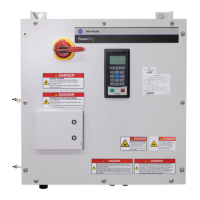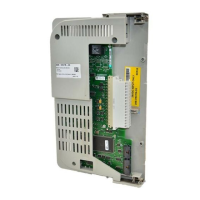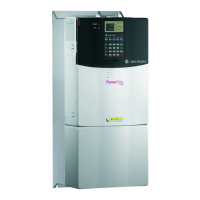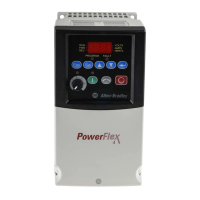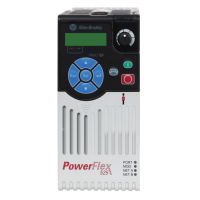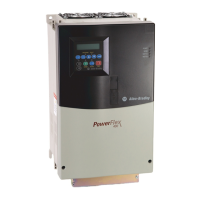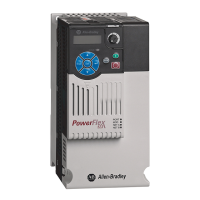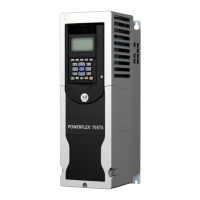2-6 Analog Inputs
Analog Inputs Possible Uses of Analog Inputs
The analog inputs provide data that can be used for the following purposes:
• Provide a value to [Speed Ref A] or [Speed Ref B].
• Provide a trim signal to [Speed Ref A] or [Speed Ref B].
• Provide a reference when the terminal block has assumed manual control
of the reference
• Provide the reference and feedback for the PI loop. See
Process PI
Loop on page 2-116.
• Provide an external and adjustable value for the current limit and DC
braking level
• Enter and exit sleep mode.
Analog Input Configuration
[Anlg In Config]
[Current Lmt Sel] allows an analog input to control the set point while [DC
Brk Levl Sel] allows an analog input to define the DC hold level used when
Ramp-to-Stop, Ramp-to-Hold, or Brake-to-Stop is active.
To provide local adjustment of a master command signal or to provide
improved resolution the input to analog channel 1 or 2 can be defined as a
trim input. Setting [Trim In Select] allows the selected channel to modify
the commanded frequency by 10%.The speed command will be reduced by
10% when the input level is at [Anlg In x Lo] with it linearly increasing to
10% above command at [Anlg In xHi].
Feedback can be used to control an operation using the “Process PI”
(proportional-integral) feature of the control. In this case one signal, defined
using [PI Reference Sel], provides a reference command and a second,
defined using [PI Feedback Sel], provides a feedback signal for frequency
compensation. Please refer to the
Process PI Loop on page 2-116 for details
on this mode of operation.
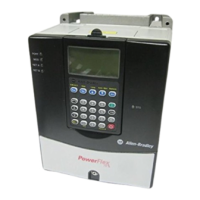
